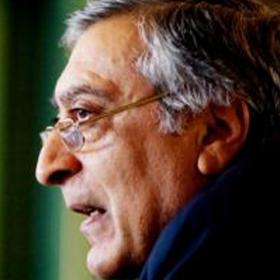
India’s Tryst with Terror
How should we interpret the latest terrorist attack in India?
Because it occurred when the Indian prime minister was in Bangladesh charting a new relationship with that country (which, until Sheikh Hasina came to power, had provided a safe haven for terrorists targeting India), the attack could be construed as a reminder that covering our flank does not lessen India’s vulnerability.
Or, it could be that the terrorists were expressing their anger at the Indian justice system that condemned to death Afzal Guru, the co-conspirator of the terrorist attack against the Indian Parliament in 2001. In their eyes perhaps, India’s constitutional justice had to submit to the vengeful dictates of Islamic justice.
Perhaps the terrorists’ idea is to periodically keep mauling the financial and political capitals of India—Mumbai and Delhi, respectively, to keep India off balance, inflame domestic tensions, deepen its domestic fault lines and distract its attention away from its global ambitions and toward the management of its domestic situation.
India’s rise may be welcomed by those distant from India’s shores as a counterweight to the threatening ascent of China, but some of India’s neighbors obsessed by parity with India would hardly be enthused by this prospect and, lacking state capacity to directly confront India, might want to use nonstate actors to flatten India’s rise as much as possible.
Terrorism in India was earlier an instrument of state policy of its western neighbor: Pakistan. Now that country itself is being bled by terrorism, which makes increasingly difficult its policy of fighting one set of terrorists for internal security reasons and supporting another for external security ones (especially as now the U.S. too, as a victim of Pakistan’s dichotomous policies on terrorism, is keeping a watchful eye on that country’s conduct).
Yet, the plague of terrorism has spread so widely in the region that India cannot insulate itself from it. If aggrieved terrorist groups want to settle scores with Islamic Pakistan, non-Islamic India cannot escape their rancor, particularly as Pakistan has nourished for decades feelings of hatred toward Hindu India. The nonstate actors earlier used by Pakistan against India for terror onslaughts have, with Pakistan losing some control, enough capacity to target India autonomously. Even if every terrorist attack against India cannot be laid at Pakistan’s door today, it needs recalling that it is Pakistan that opened wide the doors to terrorist acts against India in the first place.
India is peculiarly vulnerable to terrorism. Its borders are not secure. It has an open border with Nepal and a porous border with Bangladesh; terrorists can infiltrate these borders as well as the Line of Control in Jammu and Kashmir into India. Its coast is not adequately defended, as the Mumbai terrorist attack tragically demonstrated. Under scrutiny for its terrorist affiliations, Pakistan has been developing the shield of deniability by creating terrorist cells in India, so that when terrorist attacks occur they are attributed to local terrorists and not Pakistanis. This strategy has worked politically, as India now recognizes that there are indigenous Islamic terrorist groups operating in the country to seek redress for local grievances.
India has been trapped by its soft diplomacy toward Pakistan: a policy that recognized that both India and Pakistan were victims of terrorism, and that terrorists should not be allowed to disrupt the India-Pakistan dialogue. With this position India could no longer blame Pakistan directly for acts of terror, as that would entail derailing this policy. From being on the defensive, Pakistan now claims that instead of knee-jerk reactions against Pakistan, India should deal with its home-grown problem of terrorism. This, of course, obfuscates the reality of Pakistan’s policies and the integrated nature of the terrorist threat, which derives from a shared religion, world views, social mores, madrassah education, mosque-based politics, training, and financing.
India’s governance problem is reflected in its inadequate disposition to deal with terrorist threats even now—despite being perhaps the country most lacerated by terrorism over the years. Decision making is slow, acquisition processes are dilatory, and maintenance of the equipment bought is poor. The police forces are understaffed, insufficiently trained, and ill-equipped. The federal nature of the system obstructs a comprehensive overhaul of the policing system as law and order is the responsibility of the state governments. Besides, political interference in police functioning has damaged its professional caliber and capacity.
India’s public places are generally highly congested. The streets overflow with people and all kinds of vehicular traffic, parking is chaotic, posts for public service are always crowded—and so soft targets are plentiful.
On top of it, in a country wracked constantly by terrorism, there is no consensus on framing a tough antiterror law. Politics distorts the debate. For fear of alienating Muslim voters, tougher laws are resisted for fear that Muslims may feel targeted. More divisive feelings are generated by bringing to the fore “Hindu” terrorism as an equal problem.
The Delhi terror attack is a sad reminder that India’s tryst with terror will not end easily.

